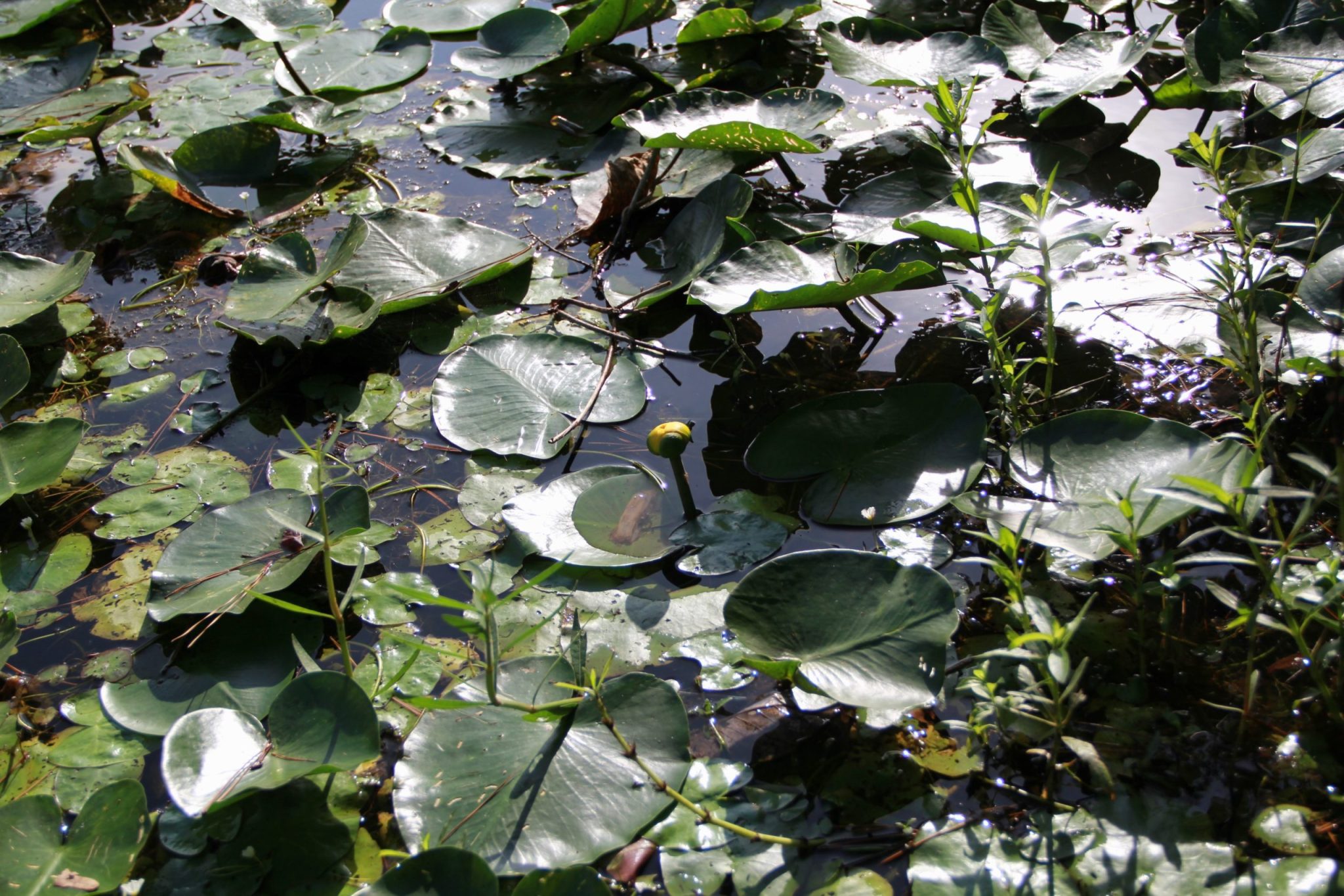Scientific name: Nuphar lutea
Physical Characteristics
Leaves:
- Arranged in a spiral
Emerged Leaves:
- Floating
- Growing upward
- Oval- to almost disk-shaped
- 1+ feet long
- Up to 10 inches wide
- Overlapping at base
Submerged Leaves:
- Thin
- See-through
- Similar to floating leaves in size and shape
- Leaf stalks slender and smooth
Flowers:
- Up to 1 inch across
- 1 inch tall
- 6 sepals
- Roundish in shape
- Slightly caving inward
- Inner portion green to yellow in color, rarely red
- Many petals
- Petals small & thick
- Anthers 0.13-0.28 inches long
- Yellow, sometimes red, anthers
Fruit:
- Egg-shaped
- Many seeds
Seeds:
- Widely egg-shaped
- 0.16-0.23 inches long
- 0.14-0.2 inches wide
Stem:
- Cylindrical rhizomes
- Trail along the ground without roots
Where Does it Grow?
Spatterdock can be found in ponds, shallow lakes, streams and springs.
Pros and Cons of Spatterdock
Spatterdock is grazed by deer; while the rhizomes are consumed by beavers, muskrats, and nutria. Seeds are consumed by ducks and other waterfowl. Submerged portions of all aquatic plants provide habitats for many micro and macro invertebrates. This invertebrates in turn are used as food by fish and other wildlife species (e.g. amphibians, reptiles, ducks, etc.). After aquatic plants die, their decomposition by bacteria and fungi provides food (called “detritus”) for many aquatic invertebrates.
USDA, NRCS. 2018. The PLANTS Database (http://plants.usda.gov, 28 March 2018). National Plant Data Team, Greensboro, NC 27401-4901 USA.
Information and photos courtesy of AquaPlant A Diagnostics Tool for Pond Plants and Algae.

